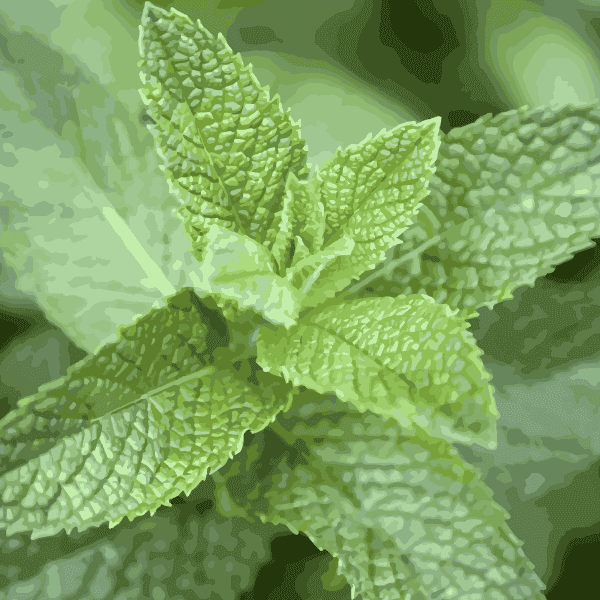
Peppermint Leaf {Organic}
Peppermint is a plant that is believed to be naturally hybridized (from watermint and spearmint) thousands of years ago. It was used in Ancient Egypt, Greece, and Rome as an herbal medicine. Peppermint has soothing qualities, anti-inflammatory properties, antimicrobial properties, supports digestion, and calms the mind.
Peppermint, also known as Mentha piperita, is a part of the mint family known as Lamiaceae. This herb is a hybrid between watermint (Mentha aquatica) and Spearmint (Mentha spicita). Peppermint can grow up to three feet tall and two feet wide at maturity. Typically, peppermint has smooth, red stems with broad and oval tooth-like leaves that may be hairy. This aromatic perennial herb has a strong, sweet odor and a warm, pungent taste with a cooling aftertaste. The peppermint plant’s fresh leaves are often used in cooking, while the flowers are dried and used to flavor foods. Peppermint is also widely known for its many medicinal properties, primarily in the form of oil.
You might need peppermint if . . .
- You experience digestive issues.
- You suffer from headaches or migraines.
- You want to make a delicious tea.
Benefits of Peppermint
- May ease digestive upset
- May help relieve headaches and migraines
- May relieve clogged sinuses and seasonal allergies
- Antibacterial properties
Common ways to use Peppermint
You can find peppermint in dried bulk, teas, capsules, powders, extracts, essential oils, and even herbal tinctures.
🌿Try making herbal extractions like this chocolate peppermint bark! ← 🟩 DIYs, recipes, and more!
Growing and Foraging Information
Peppermint is a hardy perennial that prefers moist, well-drained soils and partial shade to full sun. It can aggressively spread, so planting it in a container is recommended. Foraging for peppermint is possible and would typically occur in damp, shady areas, but before your pick, be sure to properly identify it. Harvesting is best done before the plant flowers.
Safety Concerns
Drug Interaction: If you have any health concerns or are taking any prescription medication, please consult with your healthcare provider before adding new herbs to your diet. Peppermint might lessen the effectiveness of anticoagulant medications.
Breastfeeding and Pregnancy: Trusted herbalist Richard Whelan states peppermint may dry up milk secretions, so it is best to avoid it in quantity during breastfeeding. Richard Whelan also states high doses of peppermint oil should be avoided and urges caution for the very young. Aside from that, Peppermint is very safe for pregnant women and the young and old. One of its traditional uses has been to help with painful periods, and consequently, it has been linked to having an action on the womb that has seen some authors advise against its use in pregnancy. There is no evidence to support this, and as it has helped many women with morning sickness during pregnancy and truly is safe to use throughout this time, it should be known as safe.
Other Concerns: Regarding peppermint essential oil, according to trusted aromatherapist Wendy Robbins, peppermint essential oil should be diluted at the recommended dermal maximum of 5.4%. Additionally, she is very firm on avoiding peppermint essential oil in instances of cardiac fibrillation by those with a G6PD deficiency and applying it near the face of infants/children. Finally, peppermint essential oil is safe while pregnant but unsafe for children or breastfeeding.
Select Studies About Peppermint
A review of the bioactivity and potential health benefits of peppermint tea (Mentha piperita L.)
Peppermint tea, made from the leaves of the peppermint plant, has a range of potential health benefits, including antimicrobial, antioxidant, and digestive support. While there's been research on peppermint oil for issues like irritable bowel syndrome, there aren't many studies specifically on peppermint tea, and it's generally considered safe, though people with certain health conditions should be cautious.
Peppermint has compounds that relax the tissues in animals’ GI tracts. A few studies have shown peppermint and other herbal meds can ease stomach pain in kids.